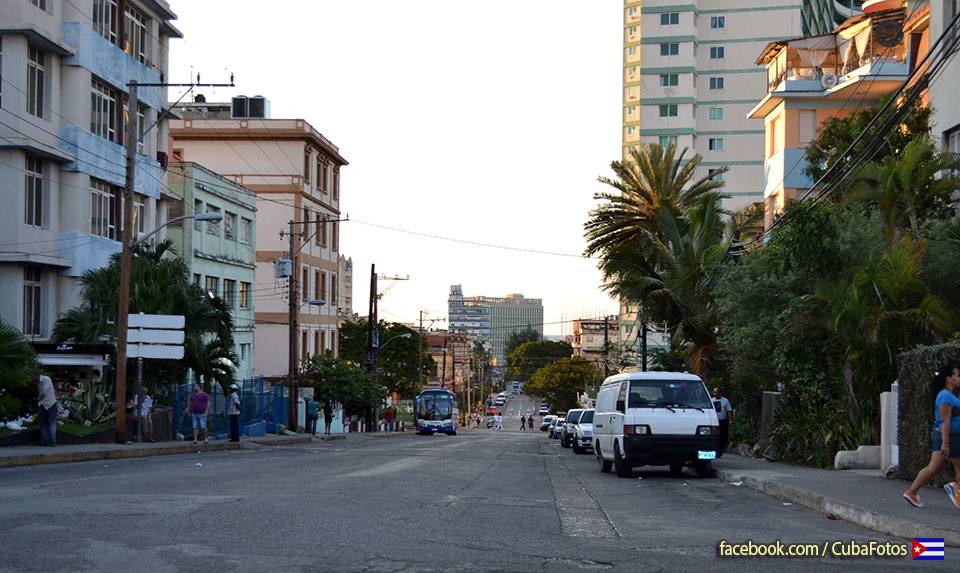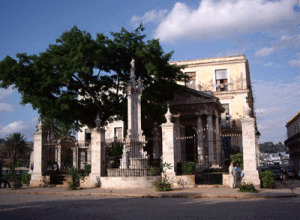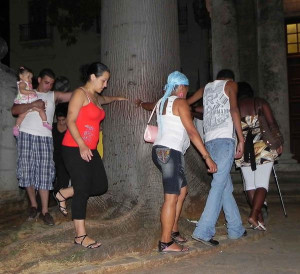THE TEMPLETE “CEIBA TREE”, LA HABANA.
For whites, blacks and Chinese ceiba is a sacred tree. Untouchable. Has, like the back, personality. No storm, hurricane or lightning that affects and is not cut and is cut down without permission from the gods. He who plants a ceiba contracts with her for a lifetime commitment, because it depends on your luck, health and development. It’s throne. In its foliage live orishas, ancestors, Catholic saints. In Santeria, Iroko, as they call believers to the ceiba, identifies with Olofi and Obbatalá with Olorum, Oloddumare and Ochanlá; It is the tree of God, and is God’s house for drainers. The plow invoke it feared and adored deities.
He is offered sacrifices to the ceiba circling around, says Natalia Bolivar in his book Cuba: pictures and stories of a magical world. They are made with a cane adorned with bells and ribbons and carrying a young bull and lit candles. They are offered roosters, ducks and turkeys white.
Still in the first half of last century, the capital of the island, preferably girls of middle and upper class, used to get up early one morning without exchanging words with anyone or even a greeting, went to the cathedral touched the knocker some of their doors and even in total silence, they walked up the Temple, monument commemorating the founding of Havana in 1519, to make a wish while giving seven times around the ceiba tree under which, according to tradition, They took place the first mass and the first town hall of the villa. All they are asking much the same: the return of a lost love or life boyfriend grant them their dreams.
The Temple, built in 1828, can be visited in one side of the Plaza de Armas. The rite was simplified. You do not need the cane with ribbons and bells, the bull pen or animals. Nor spend hours without speaking.
Just three laps are given in silence, around the trunk of magical tree as a wish is made. A simple ceremony can take place on any date, but some prefer to undertake the anniversary of the founding of Havana on November 16, Day of San Cristobal, or in the final minutes of the previous day.
CiroBianchiRoss / Barraca Habanera / InternetPhotos / www.thecubanhistory.com
The Cuban History, Hollywood.
Arnoldo Varona, Editor.
CUBA PHOTOS. Calle del Vedado, La Habana.

LA CEIBA DEL TEMPLETE, LA HABANA.
Para blancos, negros y chinos la ceiba es un árbol sagrado. Intocable. Tiene, como la palma, personalidad propia. No hay temporal, huracán ni rayo que la afecte y no se corta ni se tala sin permiso de los dioses. El que siembra una ceiba contrae con ella un compromiso de por vida, porque de ella depende su suerte, salud y desenvolvimiento. Es trono. En su fronda viven los orishas, los antepasados, los santos católicos. En la santería, el Iroko, como llaman sus creyentes a la ceiba, se identifica con Olofi y Obbatalá, con Olorum, Oloddumare y Ochanlá; es el árbol de Dios, y es la casa de Dios para los paleros. Los arará invocan en ella deidades temibles y adoradas.
Los sacrificios se le ofrendan a la ceiba dando vueltas a su alrededor, dice Natalia Bolívar en su libro Cuba: imágenes y relatos de un mundo mágico. Se realizan con un bastón adornado con cascabeles y cintas y llevando un torete y velas encendidas. Se le ofrecen gallos, patos y guanajos blancos.
Todavía en la primera mitad del siglo pasado, en la capital de la Isla, muchachas preferiblemente de clase media y alta, solían levantarse temprano una mañana y sin intercambiar palabra con nadie ni siquiera un saludo, se iban a la Catedral, tocaban la aldaba de algunas de sus puertas y, aún en total silencio, caminaban hasta El Templete, monumento que rememora la fundación de La Habana en 1519, a fin de pedir un deseo mientras daban siete vueltas en torno a la ceiba bajo la que, según la tradición, tuvieron lugar la primera misa y el primer cabildo de la villa. Todas pedían más o menos lo mismo: la vuelta de un amor perdido o que la vida les concediese el novio de sus sueños.
El Templete, construido en 1828, puede ser visitado en uno de los lados de la Plaza de Armas. El rito se ha simplificado. Ya no es necesario el bastón con cintas y cascabeles, el novillo ni los animales de pluma. Tampoco pasarse horas enteras sin pronunciar palabra.
Basta con que se den tres vueltas, en silencio, alrededor del tronco del árbol mágico mientras se formula un deseo. Una sencilla ceremonia que puede llevarse a cabo en cualquier fecha, pero que algunos prefieren acometer en ocasión del aniversario de la fundación de La Habana, el 16 de noviembre, Día de San Cristóbal, o en los minutos finales de la víspera.
CiroBianchiRoss/Barrraca Habanera/InternetPhotos/www.thecubanhistory.com
The Cuban History, Hollywood.
Arnoldo Varona, Editor.







